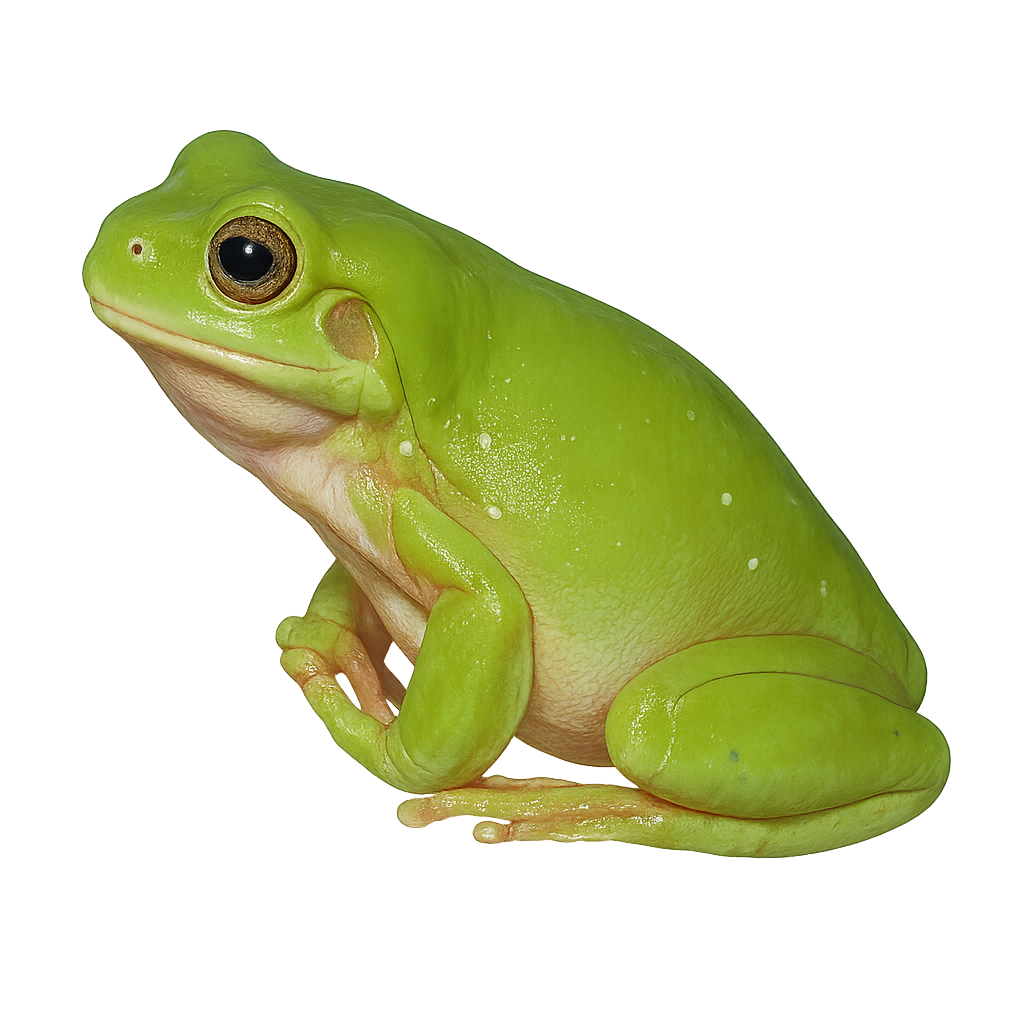Your wildlife photography guide.
Explore the australian green tree frog in detail, study its behavior, prepare your shots.
Where to observe and photograph the australian green tree frog in the wild
Learn where and when to spot the australian green tree frog in the wild, how to identify the species based on distinctive features, and what natural environments it inhabits. The WildlifePhotographer app offers tailored photography tips that reflect the australian green tree frog’s behavior, helping you capture better wildlife images. Explore the full species profile for key information including description, habitat, active periods, and approach techniques.
Australian Green Tree Frog
Scientific name: Litoria caerulea

IUCN Status: Least Concern
Family: HYLIDAE
Group: Amphibians
Sensitivity to human approach: Tolerant
Minimum approach distance: 2 m
Reproduction period: March to August
Incubation: 1–3 jours
Births: March to August
Habitat:
Rainforests, wetlands, urban gardens
Activity period :
Mainly active at night, generally discreet during the day.
Identification and description:
The Litoria caerulea, commonly known as the Australian Green Tree Frog, is a species of arboreal frog native to Australia and New Guinea. It is easily recognizable by its smooth, shiny skin, which is typically emerald green, although some may exhibit bluish hues. This frog is known for its longevity, living up to 16 years in captivity. It has adhesive discs on its fingers, allowing it to climb vertical surfaces with ease. The Australian Green Tree Frog is often found in humid areas, rainforests, and urban gardens. Its docile nature makes it a popular pet.
Recommended lens:
Macro – adjust based on distance, desired framing (portrait or habitat), and approach conditions.
Photography tips:
To photograph the Australian Green Tree Frog, it's advisable to use a macro lens to capture the details of its smooth skin and vibrant colors. As a nocturnal species, it's best to photograph it at dusk or night, using soft lighting to avoid startling it. Look for it in wetlands or gardens after rain, as it is more active. Be patient and approach slowly to avoid scaring it.
The WildlifePhotographer App is coming soon!
Be the first to explore the best nature spots, track rutting seasons, log your observations, and observe more wildlife.
Already 1 450 wildlife lovers subscribed worldwide

